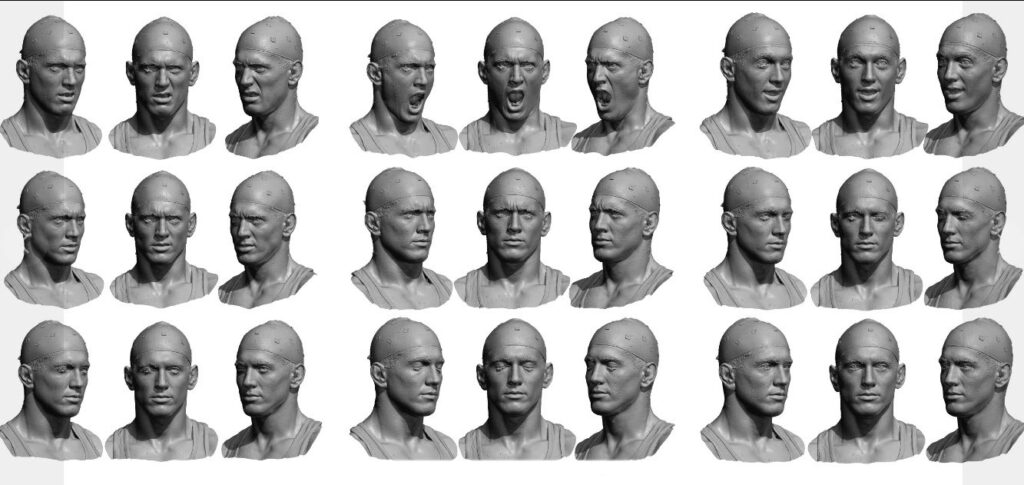The Use of Motion Capture Technology in Rigging and Animation
3 min read
Last Updated on August 4, 2023 by Journal Fact
Motion capture technology has revolutionized the world of animation, bringing an unprecedented level of realism and fluidity to character movements. It has become an indispensable tool for animators and riggers, allowing them to create lifelike performances that were once laborious and time-consuming to achieve manually. In this article, we will explore the use of motion capture technology in rigging and animation, its benefits, and how it has transformed the animation industry.
Understanding Motion Capture Technology
Motion capture, commonly referred to as mocap, is a technique that records the movements of real actors or performers and translates them into digital animations. The process involves placing markers on key points of a performer’s body, such as joints and limbs. These markers are tracked by multiple cameras in a controlled environment, capturing the performer’s movements in real-time or as raw data.
Once captured, the data is cleaned, processed, and applied to a 3D character rig, effectively transferring the actor’s performance to the digital model. This process saves animators significant time and effort, as it eliminates the need to manually animate complex movements frame by frame.
Motion Capture and Rigging
Motion capture plays a crucial role in the rigging process, particularly in creating realistic and dynamic character movements. Riggers can use motion capture data to set up and fine-tune the controls of a character rig. By observing the movements of real actors, riggers gain insights into how joints interact, how weight shifts during actions, and how muscles respond to different motions.
With this knowledge, riggers can create more sophisticated rigs that deform accurately during animation. The data from motion capture also serves as a reference for setting up constraints, IK (Inverse Kinematics) systems, and joint limits, ensuring that the character moves naturally and adheres to real-world physics.
Motion Capture and Animation
Animation is where motion capture truly shines. By using motion capture data, animators can achieve unparalleled realism in their character performances. The data captures not only the main movements but also subtle nuances in motion, such as slight head tilts, finger movements, and facial expressions.
With motion capture acting as a foundation, animators can focus on refining and enhancing the performance, adding personality and emotion to the character’s movements. This level of detail would be time-consuming and challenging to achieve manually, but motion capture expedites the process and allows animators to concentrate on the creative aspects of animation.
Benefits of Motion Capture in Rigging and Animation
Realism and Believability: Motion capture provides a level of authenticity that is difficult to replicate through traditional keyframe animation. The natural movements of real actors translate directly to the 3D model, resulting in more realistic and believable performances.
Time Efficiency: Motion capture significantly reduces the time required to animate complex movements. Animators can quickly create lifelike performances by using pre-recorded motion capture data as a starting point.
Consistency: Motion capture ensures that movements are consistent and repeatable, even in long and complex sequences. This consistency is particularly valuable in scenes that require precise replication of actions.
Physical Accuracy: Motion capture data adheres to the laws of physics and anatomy, resulting in animations that feel grounded and authentic.
Limitations and Artistic Interpretation
While motion capture technology offers immense benefits, it is not without limitations. The motion capture data might require some cleanup and refinement to remove errors or unwanted artifacts. Additionally, not all character animations can be achieved solely through motion capture. In many cases, animators still need to rely on keyframe animation to add creativity and artistry to character movements.
Motion capture data is a valuable tool, but it should not be a substitute for the animator’s artistic interpretation. Skilled animators use motion capture as a foundation to enhance performances and inject unique qualities into characters, giving them personality and emotion that can’t be achieved through data alone.
Conclusion
Motion capture technology has become a game-changer in the world of rigging and animation. It streamlines the animation process, empowers animators to create realistic performances, and elevates the overall quality of character animations. By combining the benefits of motion capture with the artistry and creativity of skilled animators, the animation industry continues to push the boundaries of what’s possible in creating lifelike and captivating characters on the screen.






